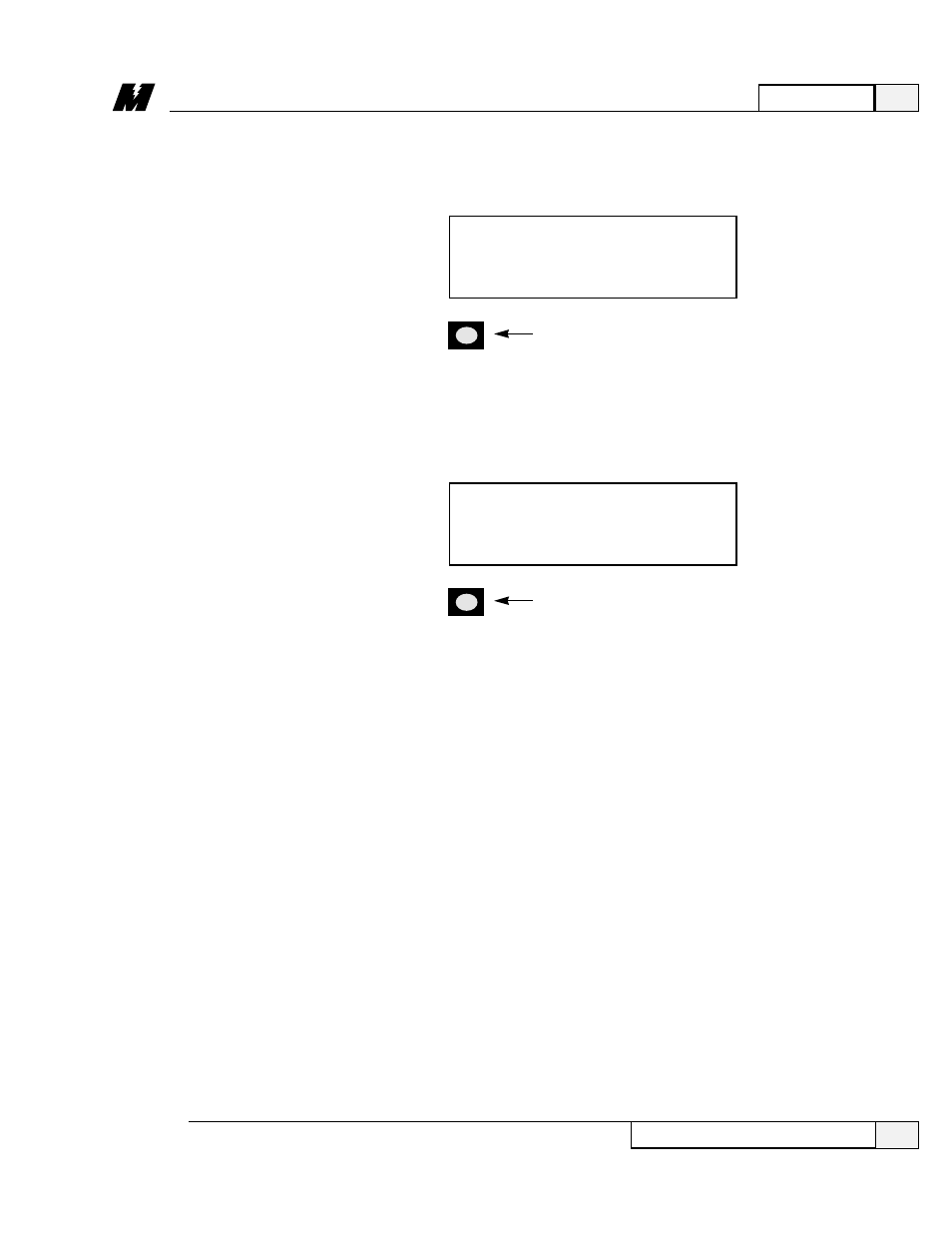Yaskawa DSD 406 User Manual
Page 53

3
Operation
49
3/21/96
Error Handling/Reporting
❏ To view the first fault on the list, press the
⇓
key. If there is a Numeric
Underflow fault on the Fault List, for example, the SCDU display will
change to:
GREEN
DATA
102
❏ The contents of the Fault List may be examined by using the
⇑
and
⇓
keys.
The first fault in the list is the first fault actually declared. When the first
fault in the list is displayed, pressing the
⇓
key will cause the next fault to be
displayed. Repeatedly pressing this key will move toward the end of the list.
The SCDU displays the word 'End' after the last fault has been displayed:
GREEN
DATA
end
Error Display
❏ When any fault other than the first fault is displayed, pressing the
⇓
key will
cause the previous fault to be displayed.
For example, if the 10th fault in the list was displayed, the end of the list
(“End”) could be reached by repeatedly pressing the
⇓
key, and the
beginning of the list (“top”) could be reached by repeatedly pressing the
⇑
key.
The drive is able to store the most recent 16 errors that have been reported to the
Error List. This list is constantly updated, with the newest error overwriting the
oldest in the list. This list is held in battery-backed-up “RAM” (NVRAM), so it
is retained when power is lost. Each time an error condition occurs, and if its
entry in the Disposition List is set to allow recording in the Error List, that new
error is placed in the list. In addition to the error code, the Error List holds
number of the PAC block that declared the error, and a time-stamp to indicate
how much time has elapsed since the error occurred. This timer is only updated
while power is applied to the drive. The time-stamp can only be viewed by the
PCDU (see the PCDU Guide), but the PAC block number can be read by the
SCDU.
